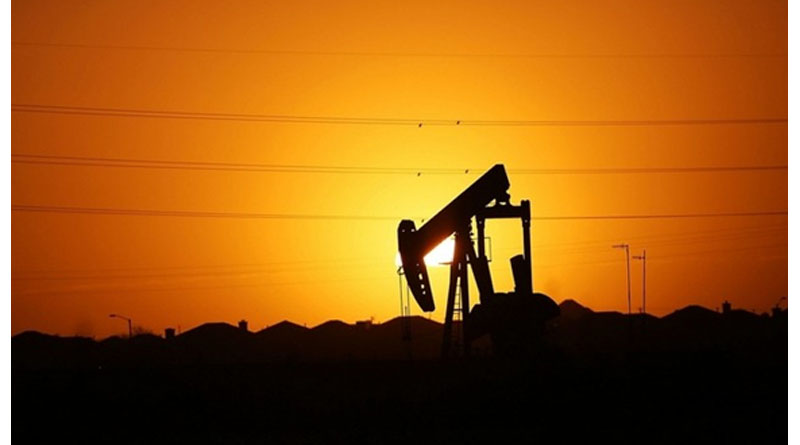IEA Warns of Slowing Oil Demand and Rising Supply for this Year and Next

Image Caption: An oil pump in Texas. Declines in non-Opec producers such as the United States have been almost entirely offset by increased production by Opec members. Spencer Platt / AFP
The International Energy Agency (IEA) says demand for oil is slowing more quickly that it had previously forecast.
The Paris energy watchdog for the major consuming countries said it was reducing its forecast for demand growth by 100,000 barrels per day for this year, to 1.3 million bpd, and forecast it slowing further next year, to 1.2 million bpd.
At the same time, the IEA said supply next year will rise again after a decline this year.
Supply last month, at 96.9 million bpd, was 300,000 bpd lower than last year’s output. “But near-record Opec supply just about offset steep non-Opec declines,” the IEA said, adding that “non-Opec supply is expected to return to growth in 2017 (up 380,000 bpd) following an anticipated 840,000 bpd decline this year”.
There had been some recent signs that the oil market was coming back into balance, including draws on inventories last month for the first time in two years, mainly reflecting the sharp decreases in supply from non-Opec sources, such as the 600,000 bpd decline in US domestic production this year compared with last year.
But recent trends in demand, together with the fact Opec has raised its production by almost as much as non-Opec producers have cut, means that the move towards balance looks like it is reversing, the IEA said.
“Recent pillars of demand growth – China and India – are wobbling,” the IEA said.
“After more than a year with oil hovering around US$50 a barrel, the stimulus from cheaper fuel is fading. Economic worries in developing countries haven’t helped either. Unexpected gains in Europe have vanished, while momentum in the United States has slowed dramatically.”
Benchmark North Sea Brent crude futures were down by 93 cents at $47.20, or more than 2 per cent, after the report. That is still near the top of the range since last spring, despite the sharp slowdown in demand.
The IEA said it was now clear that the boost in the second quarter of this year that lifted oil demand growth to 1.4 million bpd over last year’s has slowed dramatically in the third quarter to just 800,000 bpd.
The IEA’s report could give impetus to efforts by some Opec members to persuade others – particularly Saudi Arabia and its allies, the UAE and Kuwait – to reach a deal at an informal meeting in Algiers in two weeks for some kind of supply cap.
It may be easier to reach a deal now that Iran seems to have reached an effective plateau in recent months after boosting supply sharply after January’s deal to lift nuclear-related sanctions. Most of the more than 900,000 bpd increase from Opec this year has come from Iran and Iraq.
The IEA acknowledges that investment in new production outside Opec has collapsed in the past two years, hitting output particularly in the US. But Opec countries have more than made up for it.
“As a result, supply will continue to outpace demand at least through the first half of next year,” the IEA concludes. “Global inventories will continue to grow – OECD stockpiles in July smashed through the 3.1 billion barrel wall. As for the market’s return to balance, it looks like we may have to wait a while longer.”
The fact that the IEA has changed its tone so dramatically in recent months – it was not long ago confidently predicting the market would move back into balance – underlines the difficulty in tracking the complexity of the global oil market.
While the IEA talks of wobbling demand in India, for example, India’s petroleum minister, Dharmendra Pradhan, said on Monday that he expects oil demand this year to grow by 11 per cent. That is the same as last year’s rate, which beat expectations of growth at the time of only 7 to 8 per cent.
The IEA also acknowledged that a return to more normal winter temperatures in the next two quarters, after recent unseasonably warm winters, could alter its demand outlook.
Follow The National’s Business section on Twitter
(Source: TheNational.ae)





